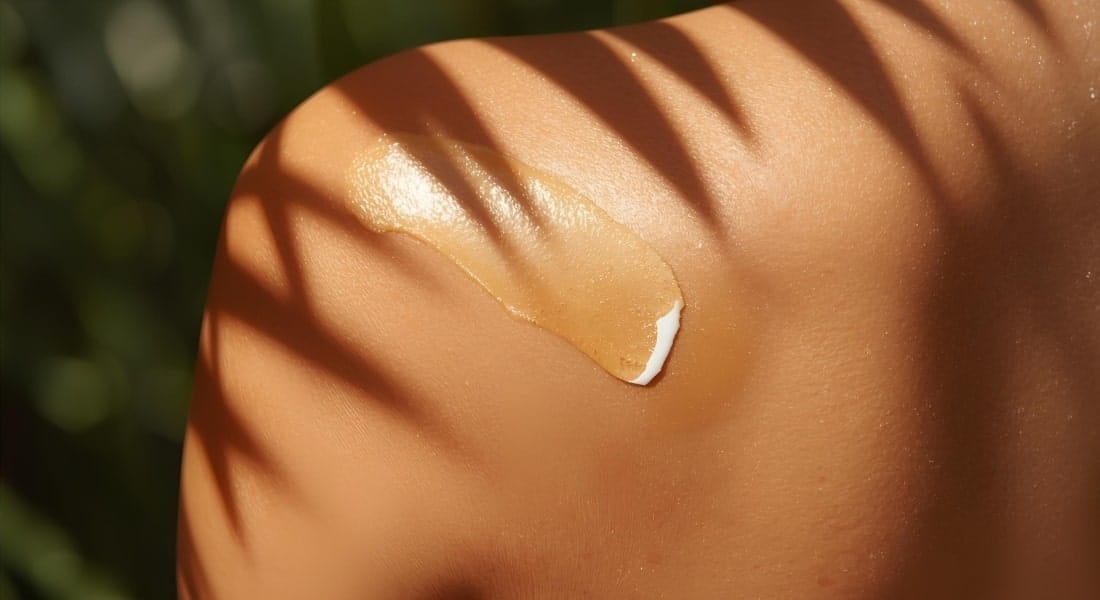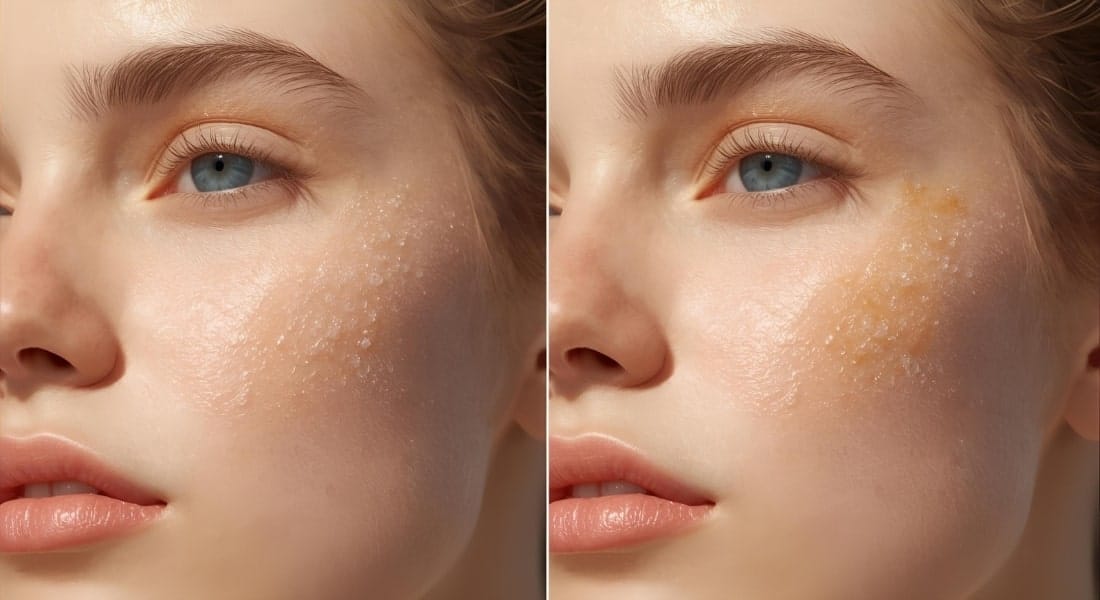In the vast world of skincare, sunscreen is non-negotiable. It’s the most critical product for defending your skin against the sun’s damaging rays, preventing premature aging, and significantly reducing the risk of skin cancer. Yet, standing in the sunscreen aisle can be confusing. The primary distinction you’ll encounter is between two fundamental types: physical (or mineral) and chemical. While both are designed to protect your skin from ultraviolet (UV) radiation, they do so in entirely different ways. Understanding the difference between physical and chemical sunscreen is key to making an informed choice that aligns with your skin type, lifestyle, and environmental concerns. This comprehensive guide will demystify the science behind each type, helping you navigate the options and find the perfect match for your skin.
Why Sunscreen Matters
Before delving into the types, it’s essential to grasp the powerful impact of UV rays. The sun emits two primary types of ultraviolet radiation that affect the skin: UVA and UVB.
- UVA rays are the “aging” rays. They penetrate deep into the skin’s dermis, where they can damage collagen and elastin fibers, leading to fine lines, wrinkles, and skin laxity. These rays are present year-round, even on cloudy days.
- UVB rays are the “burning” rays. They are the primary cause of sunburn and play a major role in the development of most skin cancers. They are most intense during the summer months and at high altitudes.
A good sunscreen provides UVA and UVB protection sunscreen, also known as broad-spectrum protection. According to the American Academy of Dermatology, regular, daily use of sunscreen is crucial for preventing sun damage and its long-term effects.
What is Physical Sunscreen?
A physical sunscreen, also commonly referred to as a mineral sunscreen, works by creating a physical barrier on the skin’s surface. It’s a true “shield” that deflects and scatters the sun’s UV radiation away from the skin.
How It Works
The active ingredients in physical sunscreens are naturally occurring minerals:
- Zinc Oxide: A broad-spectrum mineral that provides robust protection against both UVA and UVB rays.
- Titanium Dioxide: Another mineral that is highly effective at blocking UVB rays and short-wave UVA rays.
These ingredients sit on top of the skin and physically block the sun’s rays. Their mechanism is immediate, meaning they start working as soon as they are applied. This is often why mineral sunscreens are recommended by dermatologists for children and individuals with sensitive skin.

Pros and Cons
Physical sunscreen benefits are numerous, but there are also some drawbacks to consider:
Pros:
- Ideal for Sensitive Skin: Since the ingredients are not absorbed into the skin, there is a lower risk of irritation or allergic reactions.
- Immediate Protection: It works from the moment of application.
- Broad-Spectrum Protection: Both zinc oxide and titanium dioxide offer excellent protection against both UVA and UVB rays.
- Reef-Safe: Most mineral sunscreens do not contain chemicals like oxybenzone, making them a more environmentally friendly option for use in or near bodies of water.
Cons:
- White Cast: The mineral particles can sometimes leave a white or chalky residue on the skin, especially on darker skin tones. While modern formulas are improving this, it’s still a common concern.
- Thicker Texture: They can feel heavier on the skin compared to chemical sunscreens.
- Wipes Off Easily: As they sit on the surface, they can be more easily rubbed or sweated off, requiring more frequent reapplication.
What is Chemical Sunscreen?
A chemical sunscreen works by absorbing UV radiation as it enters the skin. Instead of reflecting the rays, it absorbs them and converts them into heat, which is then released from the skin.
How It Works
Chemical sunscreens use a variety of carbon-based compounds as their active ingredients. Common examples include:
- Oxybenzone
- Avobenzone
- Octinoxate
- Octisalate
These ingredients are designed to absorb into the skin, where they create a chemical reaction that dissipates the UV energy. They typically need about 20 minutes to be fully absorbed and become effective.
Pros and Cons
While chemical sunscreens are a popular choice for many, it’s important to be aware of their potential downsides.
Pros:
- Lightweight and Invisible: They are typically thinner in consistency and rub in easily, leaving no white cast. This makes them cosmetically elegant and a good choice for daily use under makeup.
- Water-Resistant: Their formula often makes them more water-resistant, a benefit for swimmers or those who sweat heavily.
Cons:
- Potential for Irritation: Since the active ingredients are absorbed into the skin, they can cause irritation, redness, or allergic reactions in people with sensitive skin. Chemical sunscreen side effects can include contact dermatitis or skin rashes.
- Requires Waiting Time: They need about 15-20 minutes to absorb and activate before they are fully effective.
- Potential for Environmental Harm: Ingredients like oxybenzone have been linked to coral bleaching, leading to bans in many coastal regions. This has fueled the growing popularity of reef-safe sunscreen alternatives.
Physical vs. Chemical Sunscreen: Key Differences

To simplify the choice, here is a quick comparison of the two types based on their key attributes.
| Feature | Physical (Mineral) Sunscreen | Chemical Sunscreen |
| Active Ingredients | Zinc Oxide, Titanium Dioxide | Oxybenzone, Avobenzone, Octinoxate, etc. |
| How It Works | Forms a protective shield on the skin to reflect UV rays. | Absorbs UV rays and converts them into heat. |
| Protection | Starts working immediately upon application. | Needs 15-20 minutes to become effective. |
| Skin Type Suitability | Excellent for sensitive, acne-prone, or rosacea-prone skin. | May cause irritation; generally not recommended for very sensitive skin. |
| Consistency | Often thicker and may leave a white cast. | Lightweight, transparent, and easy to blend. |
| Reapplication | Requires reapplication after sweating or swimming. | Can be more water-resistant. |
Ultimately, the choice between physical vs chemical sunscreen often comes down to personal preference, skin type, and how you plan to use the product. For someone with a fast-paced lifestyle who wants a transparent formula, a chemical sunscreen might be a good fit. However, for an individual with very sensitive skin or concerns about environmental impact, a mineral-based option is the clear winner.
Choosing the Right Sunscreen
Choosing the right sunscreen is a personalized decision. The best option is one you’ll use consistently every single day. Here are the key factors to consider:
- Skin Type: For people with acne-prone or sensitive skin, the best sunscreen for sensitive skin is often a physical sunscreen due to its non-irritating, non-comedogenic ingredients.
- Lifestyle: If you’re physically active or spend a lot of time in the water, a water-resistant formula is crucial.
- Cosmetic Preference: If you want a lightweight formula that disappears seamlessly under makeup, a chemical sunscreen is often the preferred choice. However, many modern mineral formulas now come in tinted versions that blend into the skin perfectly.
When looking for a reliable, dermatologist-recommended sunscreen that offers broad-spectrum protection, consider the advanced formulation of Lytec SHELL SUNSCREEN. This product is an excellent example of a high-quality physical sunscreen that provides robust UVA and UVB protection sunscreen while being gentle on the skin. Lytec SHELL SUNSCREEN is an ideal choice for daily use, combining the benefits of a mineral-based formula with a cosmetically elegant finish.
Frequently Asked Questions
Q1: Is physical sunscreen better for sensitive skin?
A: Yes, in most cases. The active ingredients in physical sunscreens (zinc oxide and titanium dioxide) are minerals that sit on the skin’s surface and are less likely to cause an allergic reaction or irritation compared to chemical sunscreen ingredients that are absorbed into the skin.
Q2: Does chemical sunscreen harm coral reefs?
A: Certain chemical ingredients, particularly oxybenzone and octinoxate, have been linked to coral bleaching and damage to marine ecosystems. For this reason, many reef-safe destinations now ban them. If you are concerned about marine life, choosing a mineral-based sunscreen is the recommended option.
Q3: Can I use both types together?
A: Yes, you can. Many hybrid sunscreens combine both physical and chemical ingredients in one formula. It is generally safe to layer them, though it’s often more practical to choose one product that meets your needs.
Q4: Which sunscreen is best for kids?
A: Dermatologists often recommend mineral sunscreens for children. Their sensitive skin is more susceptible to irritation from chemical ingredients, and the immediate protection offered by mineral sunscreens is a major benefit for active kids.
Q5: How often should sunscreen be reapplied?
A: The general rule is to reapply sunscreen every two hours, especially if you are sweating or swimming. If you are indoors away from a window, reapplication is less frequent.
Conclusion: Making the Right Choice for Your Skin

The physical vs chemical sunscreen debate is less about one being universally “better” than the other, and more about choosing the best fit for your unique needs. Whether you opt for a physical barrier that reflects UV rays or a chemical formula that absorbs them, the most important step is to commit to daily use. Protecting your skin from harmful UVA and UVB rays is the most effective way to maintain its health and youthful appearance for years to come. For reliable, dermatologist-recommended protection, discover Lytec SHELL SUNSCREEN for advanced skin protection, a premier solution designed to meet the highest standards of safety and efficacy.

